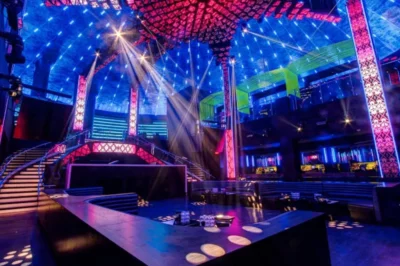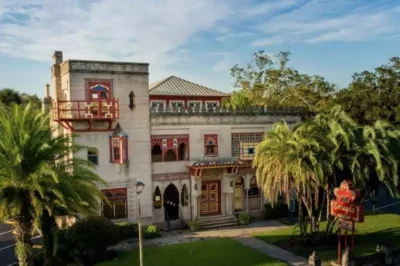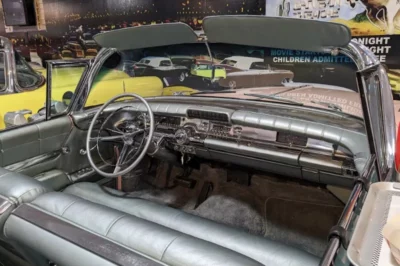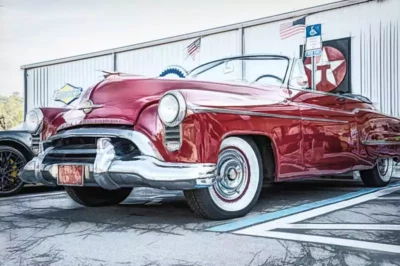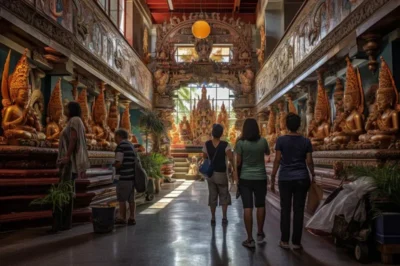Lightner Museum in St Augustine: A Portal to the Gilded Age
The Lightner Museum, located in the heart of historic St. Augustine, Florida, is a remarkable testament to the Gilded Age, showcasing an extensive collection of fine and decorative art from the 19th and early 20th centuries.
Housed in the former Alcazar Hotel, this architectural gem provides visitors with a unique experience, transporting them back in time to an era of elegance and opulence.
Lightner Museum St Augustine History
The rich history of the museum can be traced back to its origins as the Alcazar Hotel, built by railroad magnate and visionary, Henry Flagler, in 1888. This former hotel was part of the gilded age resort hotel era, reflecting the luxurious lifestyle of the time.
Designed in the Spanish Renaissance style by architects John Carrere and Thomas Hastings, the Alcazar Hotel quickly became a symbol of luxury and sophistication, attracting guests from all over the world. It was the heyday of the Alcazar hotel, a time when it was famed for its opulence and became a gathering place for the Alcazar hotel and its wealthy patrons.
The hotel thrived during the late 19th and early 20th centuries, but eventually closed its doors in 1932, during the Great Depression. This closure marked a significant period in American history, symbolizing the end of an era.
In 1946, Chicago publisher and avid collector Otto C. Lightner purchased the vacant hotel with the vision of transforming it into a museum. Otto Lightner, known for his work as a Chicago publisher, saw potential in this grand structure.
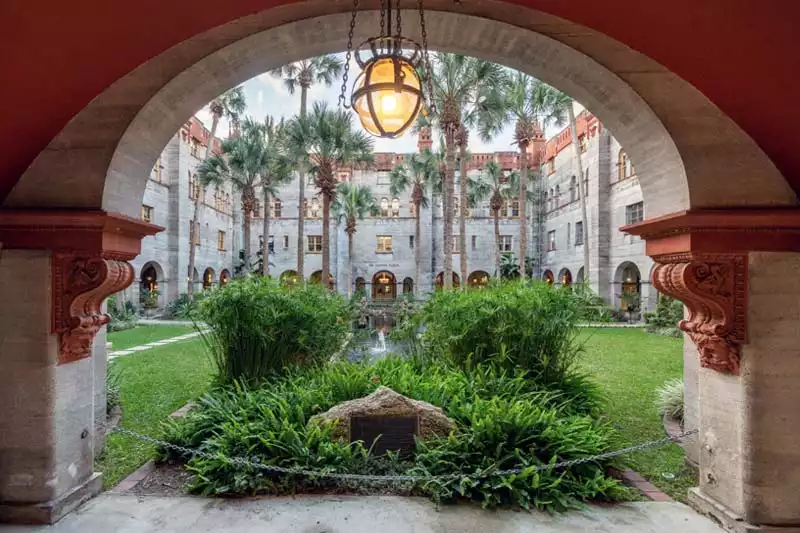
He sought to preserve the unique history and atmosphere of the Gilded Age, as well as provide a home for his extensive collection of art and antiques. Lightner’s vision was to create a space that would house these treasures and share them with the public.
Over the years, the museum has expanded its collection through generous donations, which help maintain its reputation as a world-class institution showcasing the treasures of a bygone era. The Lightner Museum in St. Augustine is now known for its diverse collection and Lightner Museum’s commitment to preservation.
Today, the museum stands as a symbol of St. Augustine’s rich cultural heritage, attracting visitors from all corners of the globe.
Its fascinating exhibits and breathtaking architecture offer an unforgettable journey through time, revealing the captivating story of the museum and the people who played a part in its creation.
The Architectural Marvel
The museum stands as a remarkable architectural marvel, embodying the essence of Spanish Renaissance design. Its facade is adorned with intricate terracotta decorations, red brickwork, and verdant courtyards, creating a tranquil and visually stunning atmosphere. This design is reflective of the Spanish Renaissance Revival style, a key element of its architectural significance.
The building’s exceptional design pays tribute to the talents and vision of architects John Carrere and Thomas Hastings, who aimed to construct an edifice that mirrored the splendor and refinement of the Victorian era, a period marked by its distinctive architectural and artistic styles.
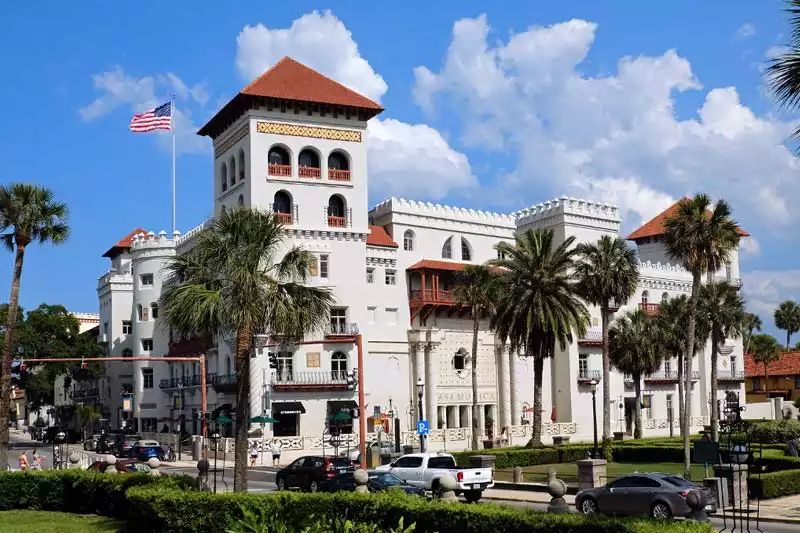
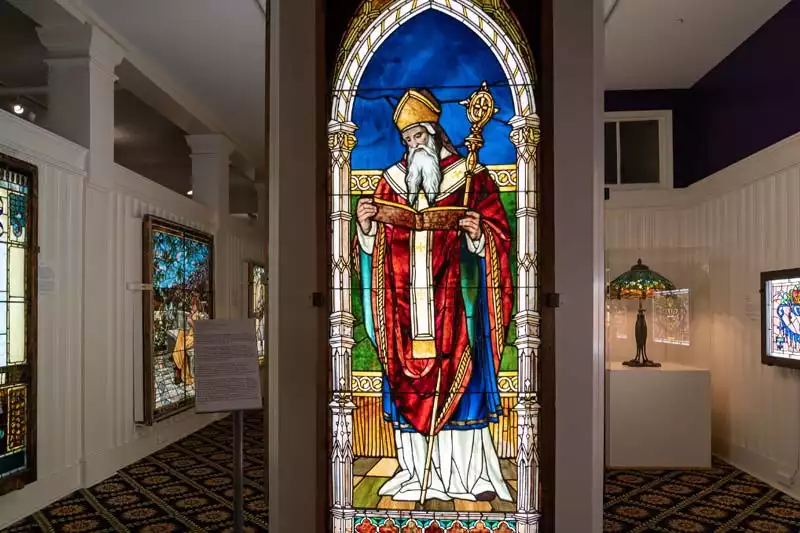
As visitors step into the museum, they are met with an array of striking interior features reminiscent of the former Alcazar Hotel’s elegance. Among these features is the world’s largest indoor swimming pool, a hallmark of the hotel’s luxury and a symbol of its status during the peak of its popularity.
The once-celebrated grand ballroom, which hosted opulent parties and events, now serves as the museum’s primary gallery, displaying a remarkable collection of paintings, sculptures, and decorative art. This ballroom gallery, with its grandeur and historical significance, adds to the museum’s allure.
The ballroom’s lofty ceilings, elaborate woodwork, and Tiffany stained glass windows form a majestic setting for the museum’s exhibits. Adjacent to it, an open courtyard with palm trees and a stone arch provide a serene outdoor space, reminiscent of the hotel’s original layout.
Another exceptional feature is the indoor pool, maintained in its original state, allowing guests to revel in the hotel’s luxurious past. This largest indoor pool, once a symbol of the Ponce de Leon Hotel’s opulence, now serves as a unique historical artifact within the museum.
Inside the Lightner Museum
Upon entering the museum, visitors find themselves surrounded by a diverse array of artistic styles, historical eras, and cultural influences. The museum is open to the public, offering an immersive experience of art right from the first floor of the museum.
The museum’s vast collection includes a broad assortment of artifacts, such as Victorian-era decorative arts, Gilded Age fine arts, antique musical instruments, costumes, and textiles. This collection also includes Victorian art glass, and mechanical musical instruments, creating a unique atmosphere for visitors.
Some of the museum’s most notable pieces include delicate glassworks by Louis Comfort Tiffany, European paintings by celebrated artists, and masterfully crafted furniture from the 19th century. Additionally, the museum houses oil paintings, an Egyptian mummy, and exhibits related to Louis Bonaparte, enhancing its historical depth.
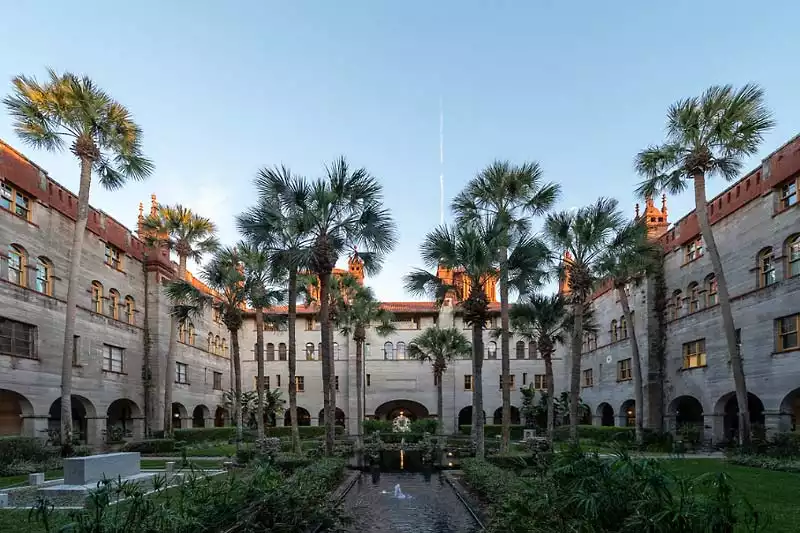
The antique musical instrument collection is particularly enthralling, exhibiting an array of distinctive and rare items like music boxes, player pianos, and orchestrions. The museum also showcases a variety of natural history specimens, adding to its eclectic charm.
Beyond its permanent exhibits, the museum frequently hosts temporary exhibitions and special events, inviting visitors to delve into various aspects of global art and culture. These exhibitions often include a range of indoor entertainment and recreational facilities, making it a home for extensive collections and hobbies.
These events often comprise lectures, workshops, and interactive activities, providing an engaging and educational experience for people of all ages. The museum also offers sulfur baths, massage parlors, and tennis courts as part of its diverse offerings.
Hours and Admission Fees
Before planning your visit to the museum, it’s essential to consider the hours of operation and admission fees. Group rates and discounts may also be available. I highly recommend visiting the official website at for the most current information on hours, admission fees, special events, and exhibitions.
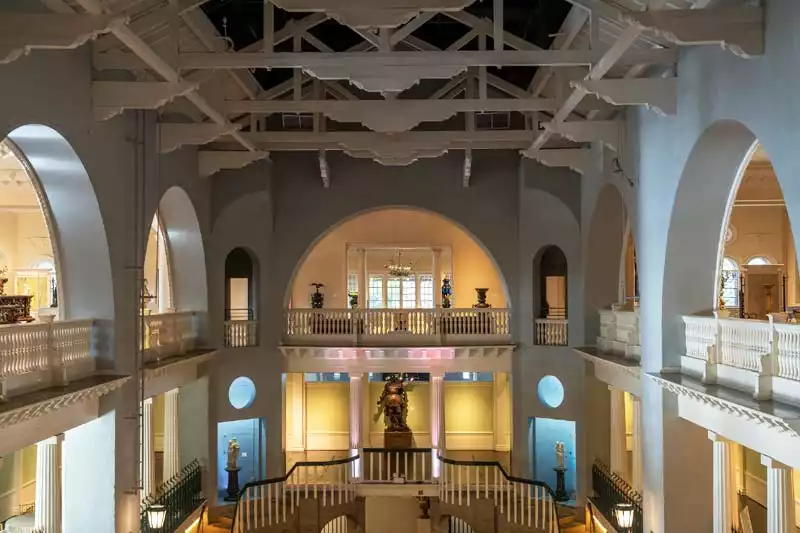
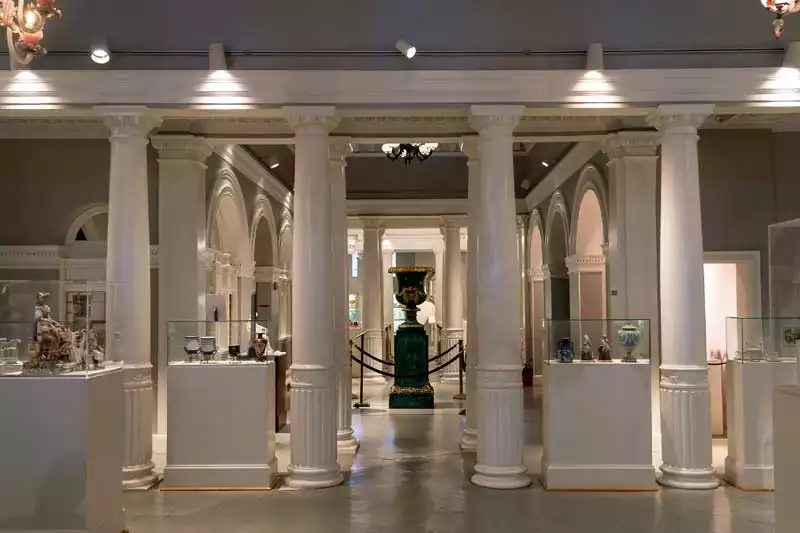
How to Get to Lightner Museum?
To get to the Lightner Museum, located at 75 King Street, St. Augustine, FL 32084, you have several options depending on your starting point and preferred mode of transportation:
- By car: f you’re driving to the museum, there are several parking options in the vicinity. The closest public parking facility is the Historic Downtown Parking Facility at 1 Cordova Street, just a short walk from the museum. Street parking is also available, but it can be limited, especially during peak tourist seasons. Additionally, if you’re visiting nearby Flagler College or other attractions in downtown St. Augustine, you can easily include the museum in your itinerary.
- By public transportation: St. Augustine’s Sunshine Bus Company operates public transit routes throughout the city. The Red and Blue lines have stops near the museum, making it easily accessible. Visit the Sunshine Bus Company website for schedules and route information.
- By trolley: The Old Town Trolley Tours and Ripley’s Red Train Tours are popular sightseeing options in St. Augustine. Both trolley tours have stops near this place, allowing you to hop on and off at various attractions throughout the city. These tours often include guided tours, providing insightful commentary on the city’s rich history and culture.
- By walking or biking: If you’re staying in the historic downtown area, the museum is easily accessible on foot or by bike. St. Augustine’s pedestrian-friendly streets and scenic views make walking or biking an enjoyable way to explore the city. This method is particularly suitable if you’re planning to visit other notable locations like the New York Public Library.
Conclusion
Nestled in the heart of St. Augustine, the Lightner Museum offers a one-of-a-kind journey through the rich history, art, and culture of the Gilded Age.
With its awe-inspiring architecture, intriguing exhibits, and immersive events, it promises an unforgettable experience for visitors across all generations.




